Can you share some of the areas and technological expertise Infosys uses on its campuses?
At Infosys, the starting point for everything has been proper planning and design. It’s called a comprehensive development plan. In the case of a smart city, the major issue to be resolved is movement. The city grid should allow easy access to markets, schools, hospitals and all other facilities without causing congestion or pollution when travelling from one end to another. By planning every aspect, we can work to decongest cities. We have achieved this on a small scale on the Infosys campuses with few disruptions and increased comfort.
While designing the campuses, we ensure efficient resource utilization. Every aspect of the design process must produce a benefit. For example, take the air-conditioning load. We try to first reduce heat gain into the building. Then we conduct energy simulations and by adopting efficient heat transfer mechanisms, designing the infrastructure efficiently and with proper equipment configuration, sizing and design, we can save energy up to 50%.
Strong controls with continuous monitoring and integration ensures that every nerve centre is working to design specifications. Infosys has the capability to develop a full-fledged technology solution, which can ride on power equipment to ensure that the manufacturer’s claims of efficiency are met. Then, we integrate this equipment with other systems by creating a comprehensive energy modeling solution.
What about the buildings themselves?
We have design parameters, which are infrastructure related. The question is about relating the design parameters to other parameters like UV, glare or energy consumption. How do we tweak design parameters to optimize all resources? We need an integrated technology solution that takes all factors into account while designing a building. On an Infosys campus, the buildings are a result of this integrated approach.
Take water. Everybody uses RO plants, which removes 80% and provides only 20% pure water. With appropriate technology, we can remove hardness, suspended particles and high salinity. With the help of an innovative company, we have implemented a process that will throw out only 10% - 15% while retaining 85% - 90% as pure water. As Infosys, we are the beta client for this company to experiment and the technology has to work under live test conditions, with a lot of permutations and combinations.
With 11 campuses in different parts of the country, we can test this technology under diverse conditions.
As soon as we hear the term rainwater harvesting, we think about big lakes where we can sequester water. But there is also injection-well technology, where we allow the water to percolate and this is five times more effective than using a lake. If we divert all the run-off water from the road or from the top of the building to ground level, it can be a permanent solution without affecting walkways. We need to make them statutory when building plans are sanctioned.
So, the Infosys campus is like a petri dish for the Smart City experiment but how does one scale it to a city?
We have planned our campuses well, in a manner that assumes that as Indians we will use the infrastructure for a long time. So, the question is how we can make this more effective and smarter for the long term.
When we met the Central Government, they heard us and then asked for some practical recommendations: “Using an existing large building, can you demonstrate how it can be made energy efficient?” We studied that issue for three days and gave them a report stating how they could reduce electricity consumption by 50%!
The Government of India spends crores of rupees on infrastructure; so how can you optimize the use of these resources? Today, Infosys constructs its buildings, all sustainable, at Rs 3000 per sq.ft., while the Government spends much more for such structures. Keeping the maintenance costs low is a challenge. With a building that will last for 50 years, you need to spend a lot of money in maintaining it plus look at aspects like ambient air quality, comfort of occupants and efficient use of electricity and water. All this needs to be factored at the planning and design stage.
How will Infosys lend its expertise to the public domain, e.g., parks, pedestrian walkways?
We haven’t done much research in that specific area but we can showcase our campuses with wide roads and footpaths and a good amount of green cover (we have planted one to two lakh trees on each of these campuses). We have spaces for people to sit and relax, recreation facilities and bicycle or walk only zones. We also have solar chargers where employees can plug in their battery-operated vehicles; parking is available on campus. We have Wi-Fi connectivity, with telephone booths plugged into places, which people can use. There are exclusive zones for smokers. There are also sufficient trashcans and waste disposal systems available.
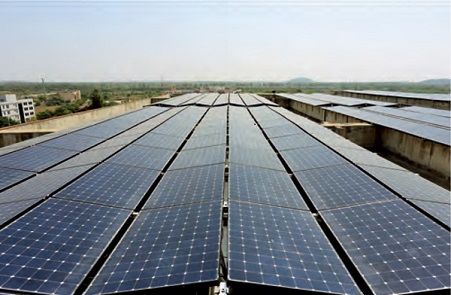 | 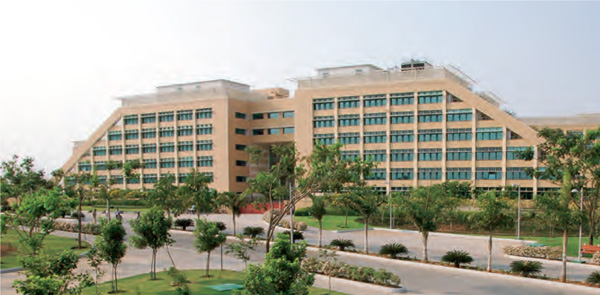 |
Apart from this, we have also created a secure eco-system. The Mysore campus has 12,000 trainees of whom 50% are girls.
We believe that when a girl is walking alone on a road, she should be able to recognize a face from a distance. So, sufficient lighting is a must round the clock. In our campus, a girl feels safe to walk even at midnight. This is what I want for my daughter too, to be able to walk freely at night or day. It’s a constant worry for any parent.
Can we discuss security which is a big issue in India today? Can smart technology help or are traditional neighborhoods with ‘eyes on the street’ better?
There are a couple of things: one, educating women on dos and don’ts, and two, technology being used to provide in-time SOS signals, that can go directly to the police or an administrator. If that happens, then the crime rate will definitely fall. However, beyond technology there is the need for everyone to co-operate and take ownership of their neighborhood. Take the example of a bomb blast. A hotel or any establishment has tight security on the inside but it also needs to keep its exterior secure and clean. Everything is connected and if each of us decides that we should secure the inside and the outside, and if every neighbor follows the same principle, the whole city will be better managed.
For example, outside the Mysore Infosys campus, we have created six to seven kilometers of pedestrian walkway. We have invested money in developing the footpath and we also monitor it. Now if the neighboring company also does this, that entire zone will be protected. Furthermore, we have a large tower with security personnel monitoring the road. So, a girl working there is always safe. We have done the same in Chennai and Hyderabad by providing three to four kilometers of well-lit pavements. And there’s round-the-clock security on campus, with guards patrolling in a vehicle. This is what we need and everybody must contribute. We can’t only hold the police accountable; they have limited resources. When the Government doesn’t have adequate resources, people have to co-operate.
Will smart technology be inclusive of the bottom of the pyramid?
Yes, of course. For example, earlier everyone thought the mobile phone was a symbol of the elite but not anymore. Mobile phones are the biggest game changer in the current scenario. A simple app on a smart phone can help with public transportation. If KSRTC (Karnataka State Road Transport Corporation) had an app that showed the location, bus route, number and schedule, I wouldn’t have to wait in the heat at the bus stop. If I am sure of getting a bus, I won’t use my car. All this needs is some GPS equipment on the bus that transfers the data to a server, which in turn transfers it to an app on the mobile phone.
An app developed by local students in Mumbai randomly allocates a time slot to each homeowner in the slum to fill their buckets from the common tap. This stops the fights and long queues. So ‘Paani Hai Jeevan’ is a simple technology solution but one that can cause a big revolution. Today, anything can be hooked up. You can see what is happening in your house, in the neighborhood, you can know almost everything because everyone owns a mobile phone.
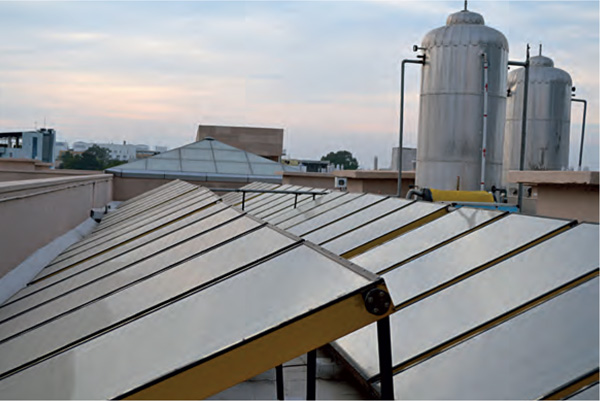 | 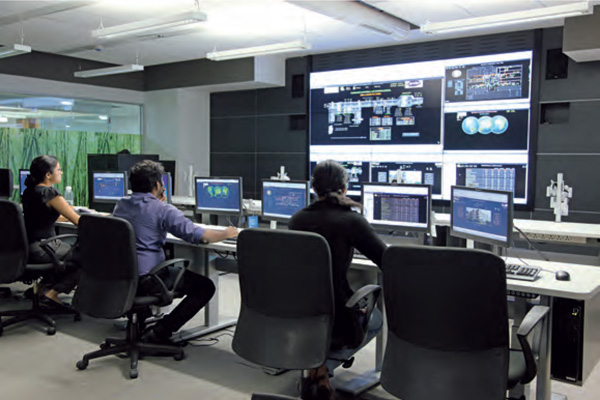 |
We have international players like IBM and CISCO offering smart city solutions. How will Infosys compete?
We are confident of our good resource utilization systems; we have good solutions on zero waste to land fill and we also have solutions on the design principles needed to build a smart city. Take the example of power. We adopted a new initiative on reducing per capita consumption by 50% and we achieved it. In the last six to seven years our employee strength has increased two times, so has our infrastructure but our energy consumption only went up by 13%. It is not magic. We know how to do it on our campuses and we know how to scale it up to cities. We have developed the new standard for a building’s energy consumption, which is far, far better than what is available or what is practiced in the USA.
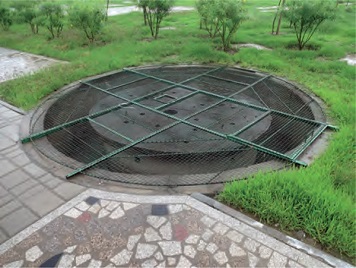 | 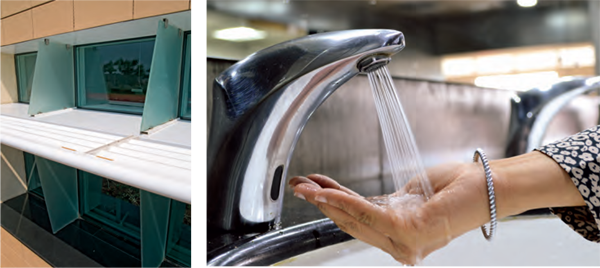 Right: Pressure-compensating aerators for optimum water use |
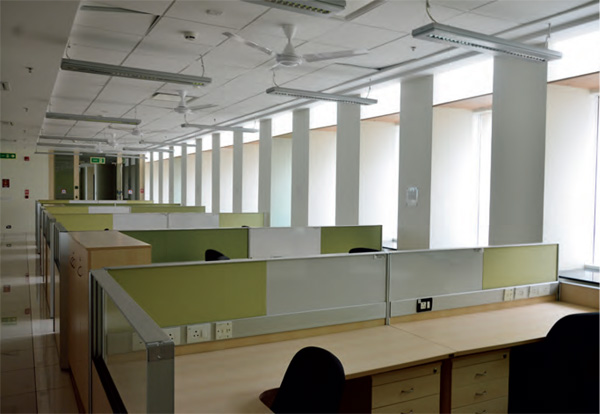
Finally, what in your opinion are the challenges to developing the grand plan of 100 smart cities?
Smart cities are a good initiative and required for this country. Now, many states claim that they will convert existing cities into smart cities or develop new smart cities. The Government of India however needs to provide guidelines and legal and administrative frameworks to do this. Hard infrastructure, like roads, pavements, encroachments, storm water drains, sewage lines and treatment and waste management are chaotic in all our cities today. So, where is the administrative framework for smart cities and who is going to do what?
The framework should also include future guidelines for new buildings that are to be constructed. As per the McKinsey report, 70% of what is required, even for 2030, is not built. Future infrastructure has to be smart in every sense. For this, the guidelines have to be clear for power, for green building norms or to set the parameters for use of resources. We are crossing dangerous limits in our consumption of resources, be it power, water or other natural resources and materials. For example, there is a crisis in power and today we are talking about green power. Each state has its own policy that is incompatible with that of others. There is no consistency or clarity on renewable energy nationwide. However, we can vouch that Karnataka has the best policy on renewable energy, comparable to that of any country in the world. But it can’t be an isolated case, the neighboring states must co- operate. We need a centralized or regional power authority to decide on the future of power.
The Government is talking about smart cities but ultimately who is going to fund these smart cities? Will the funds come from the Central Government or from private participation and local authorities? It is easier to build new cities but what do you do with the old cities?
In the smart city concept, smart processes are equally important for which we need good administration, one that is transparent. What is our appetite for e-governance? How do we implement these processes, so that the entire life cycle of any of these projects is visible to the public and there are no bureaucratic bottlenecks? The challenges are many but ultimately the process and quality of governance are critical dimensions for the creation of smart cities.

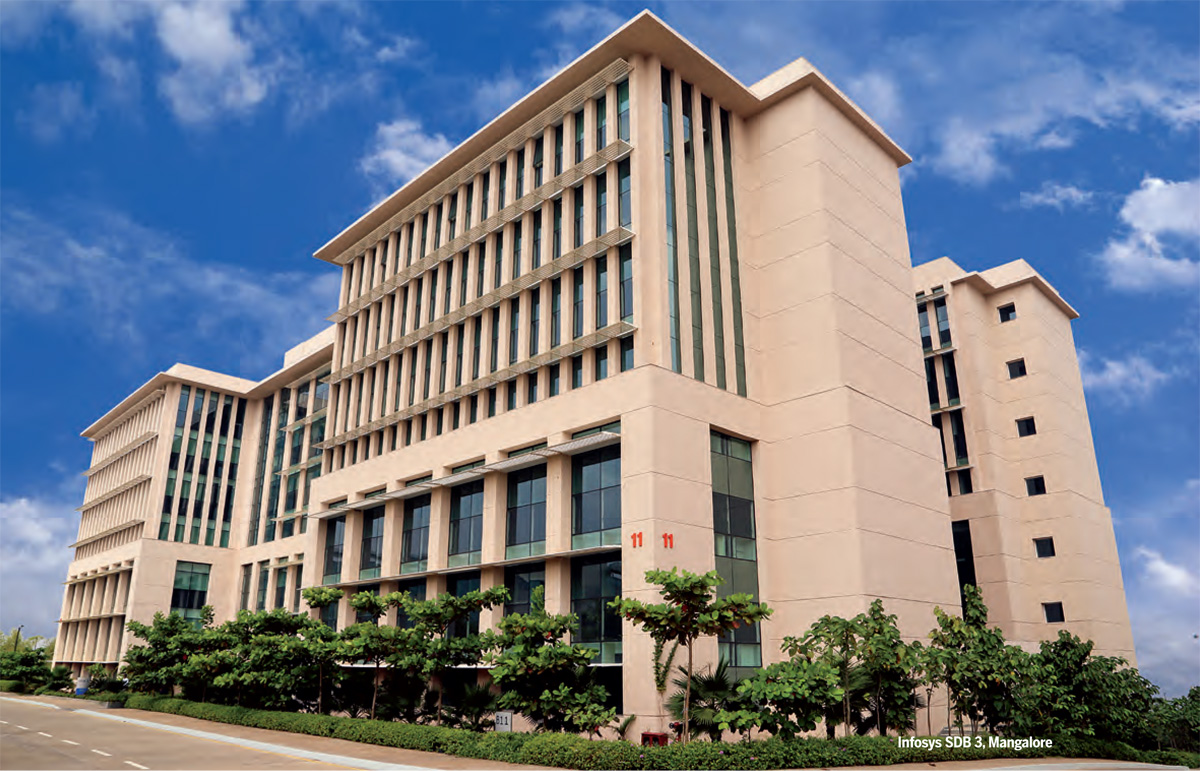

Comments (0)